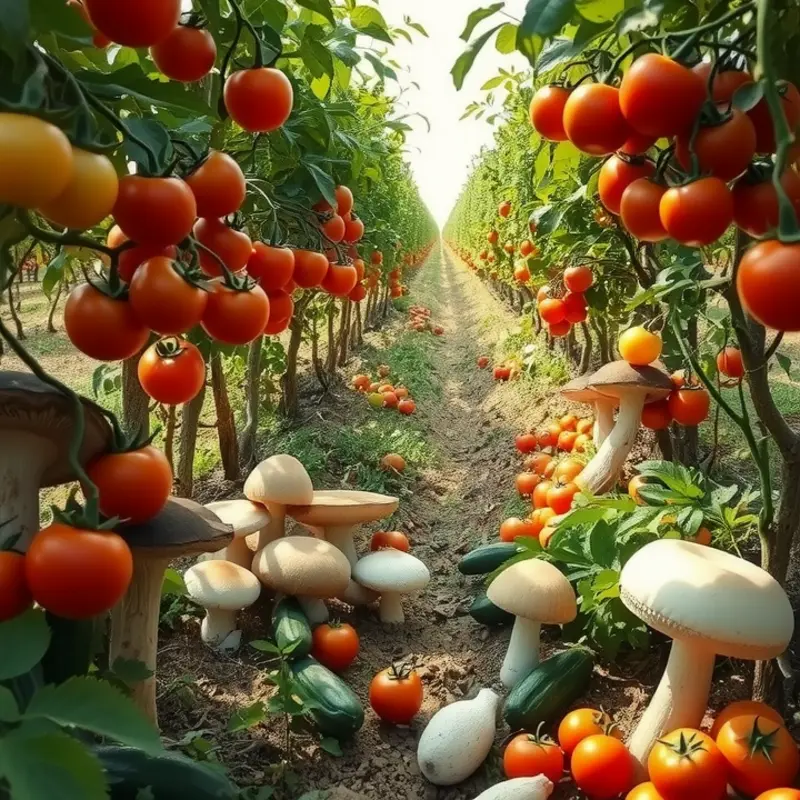As home cooks embrace healthier lifestyles, finding the right ingredients can be crucial. Salt alternatives not only enhance flavor but also contribute positively to dietary goals. This guide explores several effective alternatives that can be easily integrated into everyday cooking, making it easier to enjoy delicious meals without compromising health. Explore these options to enrich your culinary experience while prioritizing wellness.
Herbs and Spices: Nature’s Flavor Bottles

Herbs and spices transform any dish into a vibrant culinary experience without the need for excessive salt. These natural wonders not only provide unique tastes but also offer an array of health benefits. Delving into the potential of these flavor marvels can enhance your cooking and promote a healthier lifestyle.
Herbs: The Fresh Green Magic
Herbs are the leafy parts of plants, often used fresh or dried to add subtlety and depth to dishes. Basil, with its sweet, peppery aroma, complements tomatoes in a way salt never could. It’s a staple in Mediterranean cuisine, offering a hint of freshness to salads and sauces. Mint, another versatile herb, adds a refreshing touch to both sweet and savory dishes, blending perfectly in tabbouleh or in a cool yogurt dip.
For a warm, earthy aroma, consider using rosemary or thyme. Rosemary pairs beautifully with roasted vegetables and meats, infusing them with a pine-like fragrance. Thyme, known for its slightly floral yet robust taste, is a classic herb in French cooking, perfect for soups and stews. When using dried herbs, remember they are more concentrated, so use them sparingly to avoid overpowering your dish.
Spices: A World of Flavors
Spices are typically derived from seeds, fruits, roots, or bark, and offer an intense flavor punch. Spices like cumin and coriander are fundamental in various global cuisines, providing a warm, nutty taste. Cumin is integral to many Latin American and Middle Eastern dishes, while coriander seeds add depth to curries and pickling recipes.
For a hint of spice and color, turmeric is indispensable. Known for its anti-inflammatory properties, it’s a staple in Indian and Southeast Asian cuisines, adding earthy flavor and a vibrant yellow hue. Ginger provides a zesty kick that livens up both savory dishes and desserts. It’s famously used in Asian cooking for stir-fries and marinades.
Meanwhile, cinnamon and nutmeg bring warmth and sweetness to baked goods and savory stews, offering an aromatic alternative to salt. Paprika, which ranges from sweet to hot, can enhance grilled meats, stews, and egg dishes, enriching them with its earthy flavor.
Blending and Balancing for Perfect Taste
Effective use of herbs and spices hinges on balance and understanding their interactions. A harmonious blend can elevate your dish’s flavor profile far beyond simple saltiness. For inspiration on using herbs and spices to boost flavor without salt, consider exploring this comprehensive guide on flavor boosters without salt.
Knowing when to add herbs and spices during cooking can substantially enhance their impact. Fresh herbs are best added towards the end to preserve their delicate flavors, while spices benefit from added earlier, giving them time to meld into the dish.
By expanding your culinary repertoire with these natural seasonings, your kitchen can become a playground for exciting taste explorations. Discover the depth and dimension that herbs and spices bring, and enjoy the health benefits as you embark on a journey to a less salty, more flavorful life.
Umami Boosters: Elevating Flavors Naturally

Exploring the world of umami, the savory fifth taste, opens doors to flavors beyond the traditional salty spectrum. Using umami-rich foods, you can not only reduce your salt intake but also enhance the depth and complexity of your dishes. Let’s delve into natural ingredients that provide this essential culinary punch.
Mushrooms are a natural starting point. Packed with glutamate, particularly varieties like shiitake and porcini, these fungi add robust savory notes. Their flavor profile deepens when dried or roasted, making them ideal for soups, sauces, and stews.
Fermented ingredients such as soy sauce and miso are other powerful umami sources. Each carries a unique appeal, enriching dishes with savory intensity and complexity. For those avoiding soy, alternatives like coconut aminos can deliver a similar effect, ensuring everyone can enjoy a umami boost without the extra sodium.
Aged cheeses, particularly parmesan and pecorino, are concentrated umami gems. A sprinkle of finely grated cheese instantly elevates pasta, salads, and risottos. Despite their salt content, used judiciously, aged cheeses allow you to minimize additional salt.
Seaweed, rich in glutamates and minerals, provides a natural umami kick. Incorporate nori sheets or kombu into broths and sauces. They not only enhance flavor but also contribute an array of nutrients.
Tomatoes, especially when sun-dried or roasted, transform foods with their natural umami strength. The dehydration process intensifies their rich flavor, making them perfect for salads, breads, and sauces. Consider integrating roasted tomato paste for a deep, sweet-savory note in your cooking.
Fish sauce, a staple in many Southeast Asian cuisines, is incredibly potent. Just a dash can transform a whole dish, lending savory notes without overtaking other flavors. If you’re interested in understanding its role, explore how different culinary traditions have leveraged such ingredients here.
These ingredients can be combined and layered to create multifaceted flavor profiles in your dishes. For those seeking to experiment further, consider trying less conventional umami-rich foods like truffles or nutritional yeast.
By leveraging these natural umami sources, you can create meals that are balanced, satisfying, and not reliant on excessive salt. Experimenting with these ingredients not only enhances your culinary skills but also promotes healthier eating habits. After all, discovering ways to savor meals without adding extra salt is a journey worth embarking on.
Final words
Embracing healthy salt alternatives can redefine your cooking, leading to not just better health but also a more enriching culinary journey. Utilizing herbs, spices, and umami boosters helps create intense flavors without the drawbacks of excessive salt. As you experiment with these alternatives, you will discover new dimensions to your favorite recipes while contributing positively to your dietary goals. Make these substitutions a fundamental part of your kitchen routine and relish the benefits.







